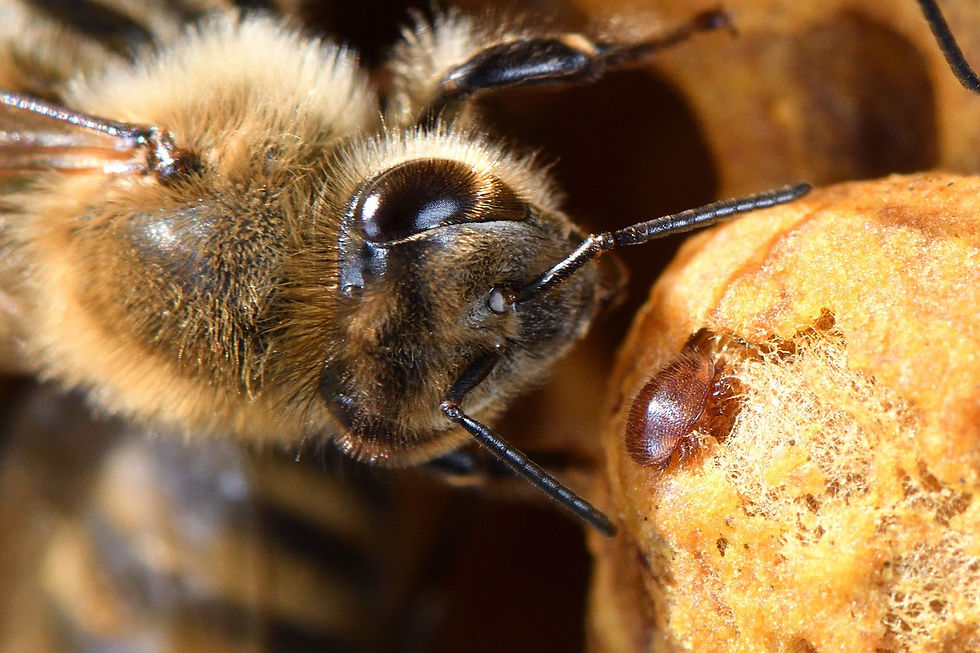Red Dwarf Honey Bee Response Update #6
- bicwaorg
- May 13, 2024
- 3 min read
DPIRD Situation update - 6 May 2024

The Department of Primary Industries and Regional Development (DPIRD) is leading the Red dwarf honey bee (RDHB) biosecurity response. This response aims to detect and eradicate all RDHB colonies.
As of April 2024, 31 active RDHB colonies have been found and euthanised, including one swarm. 16 abandoned hives have also been found. All of these colonies are confined to the industrial area on the Burrup Peninsula.
The Quarantine Area (QA) remains unchanged and covers the Burrup Peninsula in the Pilbara to support the ongoing biosecurity response to eradicate RDHB.
Beekeepers with hives, equipment or those who have collected swarms on the peninsula are not permitted to move them outside the Quarantine Area to prevent the pest from spreading.
The Quarantine Area Notice and all updated maps and notices can be found on the RDHB webpage: agric.wa.gov.au/red-dwarf-honey-bee.
Laboratory testing of RDHB nests
All located nests are humanely euthanised and samples taken back to our laboratories for analysis and testing for bee viruses and mites.
Results indicate that most nests are positive for the presence of Euvarroa mite (Euvarroa sinhai) but negative for all other mites including Varroa mite and Tropilaelaps mite or running mite, although some results from the recently detected nests are still pending.
Tests are also negative for exotic viruses such as Deformed wing virus and Sacbrood virus. Molecular testing has found no evidence of Acarapsis woodi (tracheal mite) presence.
Euvarroa is related to, but not the same species as Varroa mite.
The euvarroa mite is thought to only parasitise RDHB and it usually does not impact European honey bee.
However, there is the potential for it to survive on honey bees where they could reproduce and impact the life and health of the bee.
Euvarroa mite and the potential for RDHB to introduce other mites and viruses to Australian honey bee populations is a key reason behind the eradication efforts.
Next steps
Although the wet weather brings challenges for the surveillance in the area, the plentiful water sources offer the surveillance teams opportunities to observe foraging RDHB.
Recently, foraging RDHB have been seen at seven different locations within the QA.
An additional surveillance team will be in the field over the next few weeks to continue to monitor these foragers so we can locate the nest they are coming from.
Surveillance continues around the QA to ensure there are no nests outside the QA.
DPIRD would like to thank the many stakeholders that have provided support and assistance in accessing areas within the Burrup Peninsula to carry out our surveillance activities.
More information
For more information please visit: agric.wa.gov.au/red-dwarf-honey-bee.
For beekeeper enquiries, please contact James Sheehan on 0427 449 103 or james.sheehan@dpird.wa.gov.au.
Reporting
Early detection is key to protecting Western Australia’s valuable bee and horticultural industries. Immediately report any unusual bees or nests.
Members of the public and workers in the area are encouraged to report sightings of any exotic bees in the area to assist in ensuring no further red dwarf honey bees are present.
If you work at a port or transport imported goods and shipping containers, you must report any sighting of bees associated with these goods.
Exotic bees are a pathway for bee pests and viruses so they must be reported.
Report all sightings to the department’s Pest and Disease Information Service on (08) 9368 3080 or email padis@dpird.wa.gov.au.
Alternatively, you can send photos via the department’s MyPestGuide® Reporter app (Google Play Store and Apple iTunes Store).
 |
|---|
Red dwarf honey bee Apis florea
|
 |
Nest
|




Comments